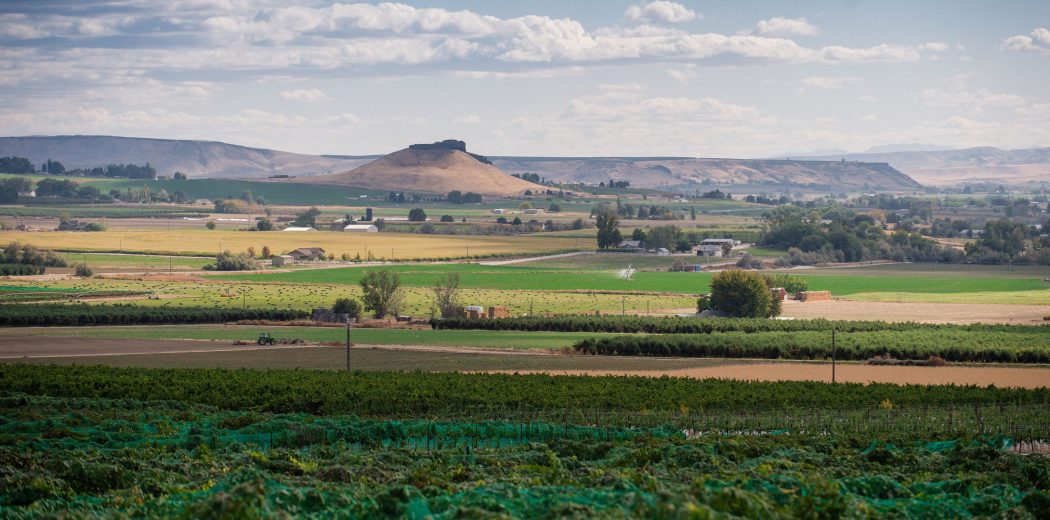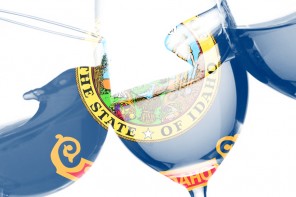It is not easy to get to Idaho and tourists rarely end up there by accident. Most of the state is better known as an agricultural hub and a ski destination than prime winegrowing territory. However, a handful of serious producers are upping the ante on wines produced in the state.
The Idaho wine producers recently convened a conference in Boise and brought a number of facts to the table. I was lucky enough to be among a handful of journalists in attendance and also had a chance to visit some of the local wineries while I was there. Most producers are making a few thousand cases a year, few of which make it outside of the state. Oregon and Washington — that both have their own solid fonts of wine production — are the most frequent export destinations for Idaho wine. But a handful of producers are also exporting to Taiwan where there’s a demand for the wines.
The bulk of vintners in Idaho don’t own their vineyards or often even produce their own wines, which is an odd decision in most of the winemaking world. Several shared with me their belief that grape growing and wine production are two separate skill sets, which is true, so many producers in Idaho don’t seem to want to take them both on. Many use experienced, local winemakers like Greg Koenig, who also has his own winery and distillery in Caldwell, just outside of Boise. Most Idaho wineries only produce a couple thousand cases a year so, sadly, these wines don’t make it beyond Idaho state borders with any regularity.
The Skinny on Idaho
Land is still affordable here if often quite remote. It won’t be long before well-heeled California and Washington-owned producers start investing in this rural slice of heaven. Those of us in the business can only hope the region’s homegrown producers will take an active role in the state’s development.
The Snake River Valley (SRV), about 45 minutes outside of Boise, is the region’s main wine-producing area. It’s also the oldest with the two others being the Eagle Foothills AVA and the Lewis-Clark appellation in the north of the state. The drive isn’t charming and amenities in the area are few and far between. The executive director of the Idaho Wine Commission, Moya Dolby, notes that the state’s 52 wineries would benefit from an elegant hotel and other amenities to encourage tourism.
The state’s producers in the region are also investing in over 20 varietals in an attempt to see which perform best, which for a nascent wine industry, makes it hard to sort out what grapes perform best in Idaho. Seasoned executives, such as Meredith Smith, a winemaker at the state’s largest producer Sawtooth, as well as the iconic Ste. Chapelle Estate, confirm the region is still in its infancy.
Local producers, such as Earl Sullivan of the Garden City-based Telaya Winery, view growing conditions as similar to those in Spain’s Rioja region and France’s Rhône Valley. So it should come as no surprise that Spanish-mainstay Tempranillo is a favorite — Boise is also home to a vibrant Basque community — as well as classic Rhône grapes such as Viognier and Syrah.
While many of the state’s producers are focusing on Syrah in both the form of single varietal bottles and blends, they weren’t my favorites. I found the bulk of the Syrahs to be inconsistent in style, which has long been the case in much of eastern Washington where most of these wineries take their viticultural inspiration.
A safer bet might be the SRV’s fruit-forward and affordable Cabernet Sauvignons, which can resemble some of the best of Eastern Washington’s. The region’s bone-dry and ephemeral, mineral and aromatic Rieslings such as the ones from Bitner and Sawtooth are delicious and should not be missed. The Idaho Tempranillos are also aging exceptionally well with 2012 turning out to be a stellar vintage. Coiled, another Idaho winery also makes a crisp and refreshing sparkling Riesling, called Rizza, which was another favorite as was Williamson Orchards & Vineyard’s strawberry-rich rosé of Sangiovese.
The state is clearly in its wine infancy, as confirmed by Sawtooth’s Smith, and will continue to hone in on varietals that show best in its widely dispersive appellations. One can only hope that the local tourism industry will grow along with the wineries to help facilitate getting more visitors to visit Idaho’s wine country.
Photo by Kim Fetrow




